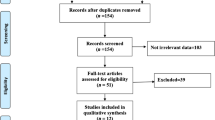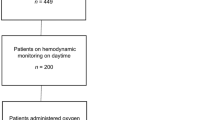Abstract
Background: A 50% nitrous oxide/oxygen (N2O/O2) premix is widely used to alleviate pain or anxiety during brief care procedures in various medical domains. In some countries, recent changes in regulation status for medical gases state that they should be considered as drugs. Consequently, more valuable data gained from exhaustive clinical surveys are needed. This prospective study, conducted in the same conditions imposed for testing a drug, aims to analyse the factors that affect tolerance of the 50% N2O/O2 premix in a wide range of clinical indications.
Methods: In a 4-year prospective survey, 35 942 data sheets were received from 191 French hospital paediatric (82%) and adult units (18%). Of these, 35 828 sheets were sufficiently complete to be included in the study. The number and the type of adverse events declared to the manufacturer were analysed.
Results: A total of 1581 (4.4%) adverse events were reported on 1384 data sheets, which were mostly gastrointestinal and neuropsychiatric disorders (86%). The main factors associated with adverse events were age, concomitant drug administration and longer duration of inhalation. Among the 27 (0.08%) reported serious adverse events, only 9 (0.03%) were possibly attributed to the N2O/O2 premix. Among the serious adverse events that were not attributed to the gas, a concomitant drug association and insufficient patient surveillance occurred in 12 and 2 cases, respectively.
Conclusion: This survey confirms the pharmacological safety of the 50% N2O/O2 premix in a wide variety of clinical indications and emphasises the need for rational training of medical personnel in its administration.




Similar content being viewed by others
Notes
The use of trade names is for product identification purposes only and does not imply endorsement.
References
Tunstall ME. Obstetric analgesia: the use of a fixed nitrous oxide and oxygen mixture from one cylinder [letter]. Lancet 1961; 28(2): 964
Sher AM, Moyes DG, Cleaton-Jones PE, et al. A comparison of Entonox and nitrous oxide for inhalation sedation in dentistry. J Dent Assoc S Afr 1983 May; 38(5): 281–3
Kerr F, Brown MG, Irving JB, et al. A double-blind trial of patient-controlled nitrous-oxide/oxygen analgesia in myocardial infarction. Lancet 1975 Jun; 28(7922): 1397–400
Masood J, Shah N, Lane T, et al. Nitrous oxide (Entonox) inhalation and tolerance of transrectal ultrasound guided prostate biopsy: a double blind randomized controlled study. J Urol 2002 Jul; 168(1): 116–20
Notini-Gudmarson AK, Dolk A, Jakobsson J, et al. Nitrous oxide: a valuable alternative for pain relief and sedation during routine colonoscopy. Endoscopy 1996 Mar; 28(3): 283–7
Brislin RP, Stayer SA, Schwartz RE, et al. Analgesia for venepuncture in a pediatric surgery centre. J Paediatr Child Health 1995 Dec; 31(6): 542–4
Gall O, Annequin D, Benoit G, et al. Adverse events of premixed nitrous oxide and oxygen for procedural sedation in children. Lancet 2001 Nov; 358(9292): 1514–5
Hennequin M, Manière M-C, Albecker-Grappe S, et al. The use of a prefixed 50%N2O/50%O2 mixture as a drug for sedation in patients with special needs: a prospective multicentric trial. J Clin Psychopharmacol 2004 Oct; 24(5): 552–4
Fauroux B, Onody P, Gall O, et al. The efficacy of premixed nitrous oxide and oxygen for fiberoptic bronchoscopy in pediatric patients: a randomized, double-blind, controlled study. Chest 2004 Jan; 125(1): 13–4
Atassi K, Mangiapan G, Fuhrman C, et al. Prefixed equimolar nitrous oxide and oxygen mixture reduces discomfort during flexible bronchoscopy in adult patients: a randomized, controlled, double-blind trial. Chest 2005 Aug; 128(2): 863–8
European Agency for the evaluation of medicinal products. Clinical safety data management: definitions and standards for expedited reporting: note for guidance on clinical safety data management: definitions and standards for expedited reporting. ICH Technical Coordination, London, 1995. CPMP/ICH/ 377/95
Stewart RD, Paris PM, Stoy WA, et al. Patient-controlled inhalational analgesia in prehospital care: a study of side-effects and feasibility. Crit Care Med 1983 Nov; 11(11): 851–5
Annequin D, Carbajal R, Chauvin P, et al. Fixed 50% nitrous oxide oxygen mixture for painful procedures: a French survey. Pediatrics 2000 Apr; 105(4): E47
Divatia JV, Vaidya JS, Badwe RA, et al. Omission of nitrous oxide during anesthesia reduces the incidence of postoperative nausea and vomiting: a meta-analysis. Anesthesiology 1996 Nov; 85(5): 1055–62
Kanagasundaram SA, Lane LJ, Cavalletto BP, et al. Efficacy and safety of nitrous oxide in alleviating pain and anxiety during painful procedures. Arch Dis Child 2001 Jun; 84(6): 492–5
Stewart RD, Gorayeb MJ, Pelton GH. Arterial blood gases before, during, and after nitrous oxide:oxygen administration. Ann Emerg Med 1986 Oct; 15(10): 1177–80
Dunn-Russell T, Adair SM, Sams DR, Russel CM, Barenie JT. Oxygen saturation and diffusion hypoxia in children following nitrous oxide sedation. Pediatr Dent 1993 Mar-Apr; 15(2): 88–92
Einarsson S, Stenqvist O, Bengtsson A, et al. Gas kinetics during nitrous oxide analgesia for labour. Anaesthesia 1996 May; 51(5): 449–52
Primosch RE, Buzzi IM, Jerrell G. Effect of nitrous oxideoxygen inhalation with scavenging on behavioral and physiological parameters during routine pediatric dental treatment. Pediatr Dent 1999 Nov-Dec; 21(7): 417–20
Acknowledgements
This project was supported financially by Air Liquide Santé International, Paris, France.
The authors have no conflicts of interest that are directly relevant to the content of this manuscript.
Author information
Authors and Affiliations
Corresponding author
Rights and permissions
About this article
Cite this article
Onody, P., Gil, P. & Hennequin, M. Safety of Inhalation of a 50% Nitrous Oxide/Oxygen Premix. Drug-Safety 29, 633–640 (2006). https://doi.org/10.2165/00002018-200629070-00008
Published:
Issue Date:
DOI: https://doi.org/10.2165/00002018-200629070-00008




